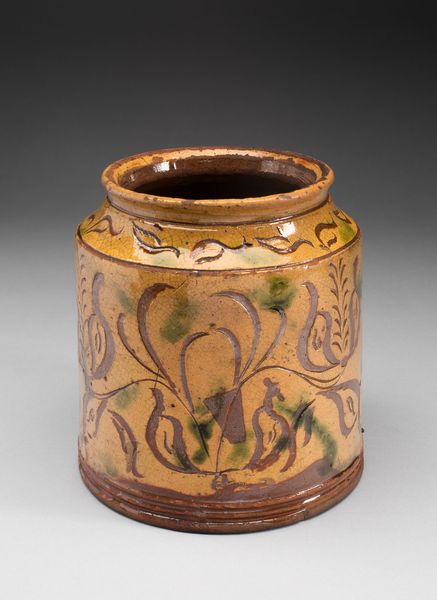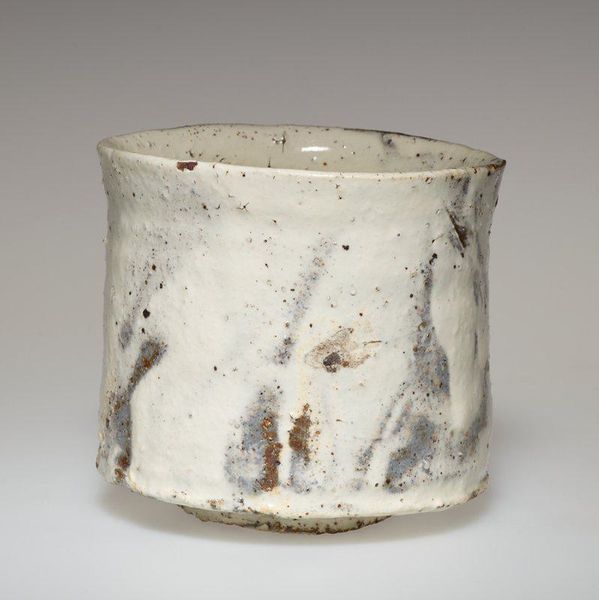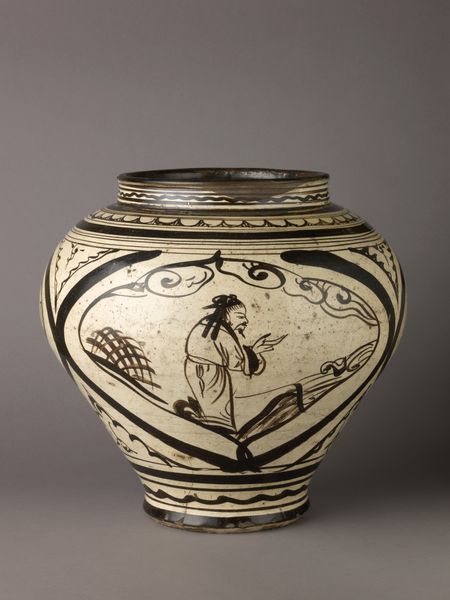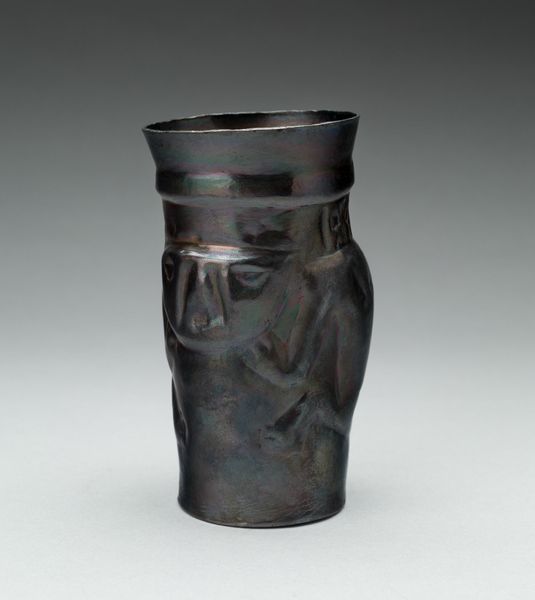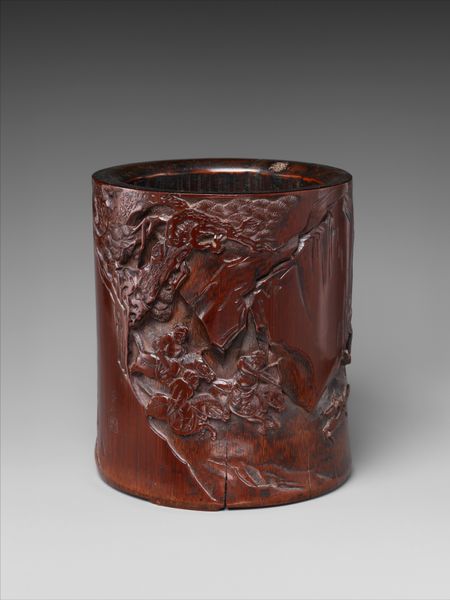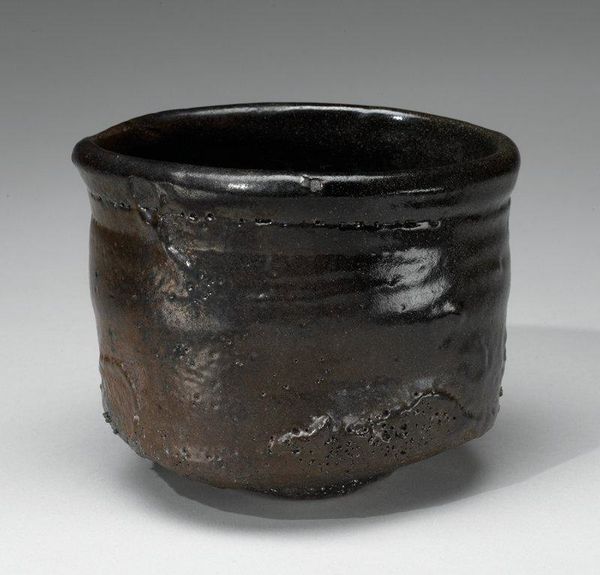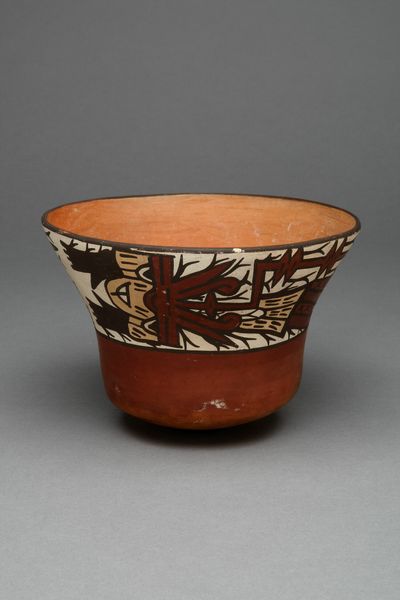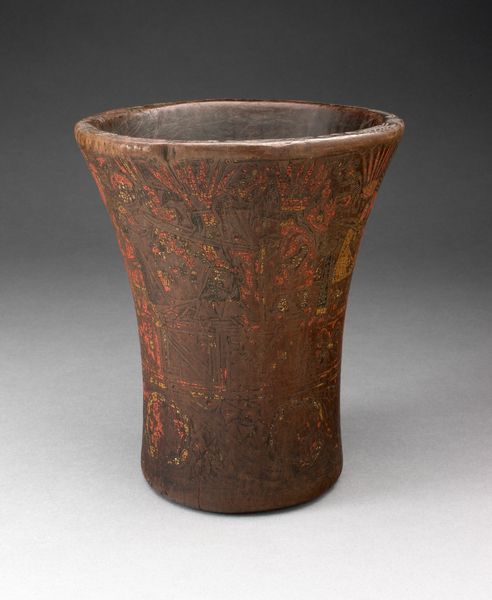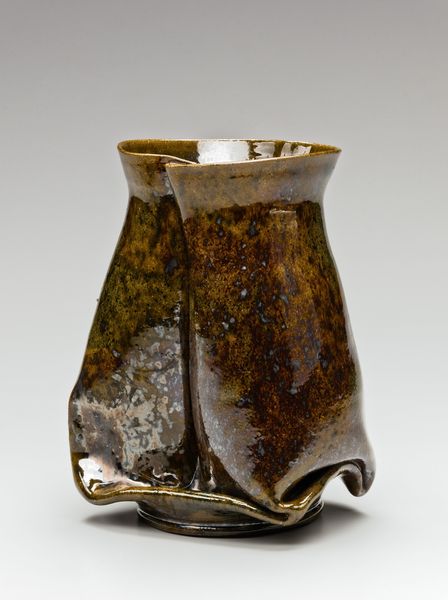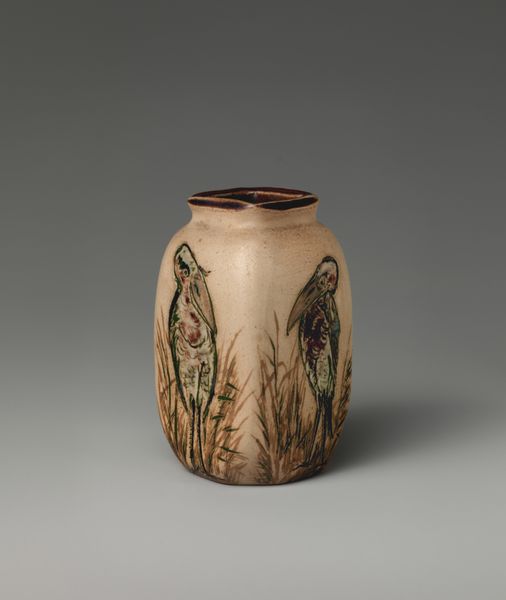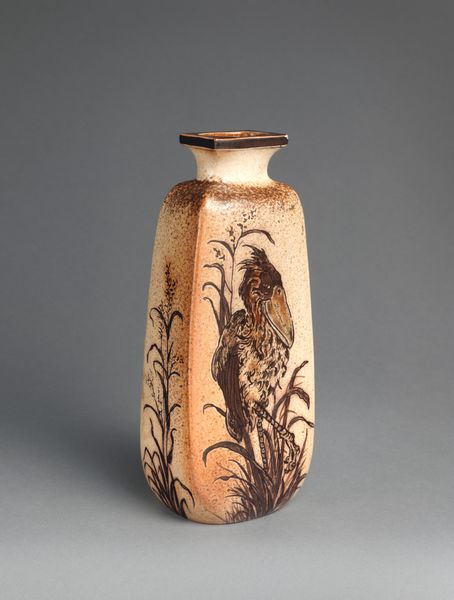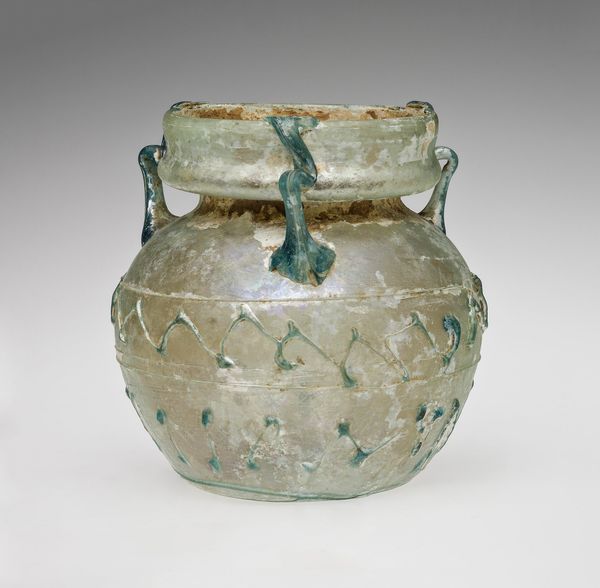
Hexagonal incense burner with plum blossoms 17th-18th century
0:00
0:00
ceramic
#
pottery
#
asian-art
#
ceramic
#
japan
#
ceramic
#
decorative-art
Dimensions: 4 1/8 × 4 5/8 × 4 5/8 in. (10.48 × 11.75 × 11.75 cm)
Copyright: Public Domain
Art Historian: Here we have a hexagonal incense burner with plum blossoms, created in Japan likely during the 17th or 18th century by Ogata Kenzan. It resides here at the Minneapolis Institute of Art. Art Historian: It strikes me as both solid and delicate. The sharp geometric shape contrasts beautifully with the fluid brushstrokes of the plum blossoms. It evokes a sense of contemplative strength, almost like a visual haiku. Art Historian: Kenzan, along with his older brother Korin, significantly impacted the Rinpa school of Japanese art, known for its decorative style that moved beyond court circles to influence broader society. Artisans like Kenzan were instrumental in developing sophisticated urban consumer culture. Art Historian: The plum blossom is heavy with meaning isn’t it? Its ability to bloom even in the harsh cold, speaks volumes. For centuries it's been a symbol of resilience, hope, and the fleeting nature of beauty within East Asian cultures. It perfectly encapsulates that poignant mixture of hope and melancholy. Art Historian: Absolutely. And these incense burners became status symbols within a rising merchant class. Think of the incense itself - not just fragrance, but performative spirituality and a conspicuous display of wealth within domestic spaces. Owning a piece of art such as this broadcasted more than just taste; it signalled social aspiration. Art Historian: There's such intentionality behind the seeming simplicity. That earthy, crackled glaze against the dynamic plum blossoms evokes the traditional principles of wabi-sabi – finding beauty in imperfection and impermanence. It speaks to our connection with the natural world. Art Historian: Though appearing traditional at first glance, artists such as Kenzan actually navigated innovative systems of patronage and artistic collaboration that shaped consumer markets during a time of social change. The piece's enduring appeal shows that visual forms have cultural staying power when artists tapped into socio-economic currents and trends. Art Historian: Yes, an intriguing little vessel containing layered social, cultural, and personal meaning – history made tangible. Art Historian: Indeed – it reveals an aperture into the multi-layered relationship among patronage, the rise of craft traditions, and shifting spiritual and cultural values in early modern Japan.
Comments
No comments
Be the first to comment and join the conversation on the ultimate creative platform.
